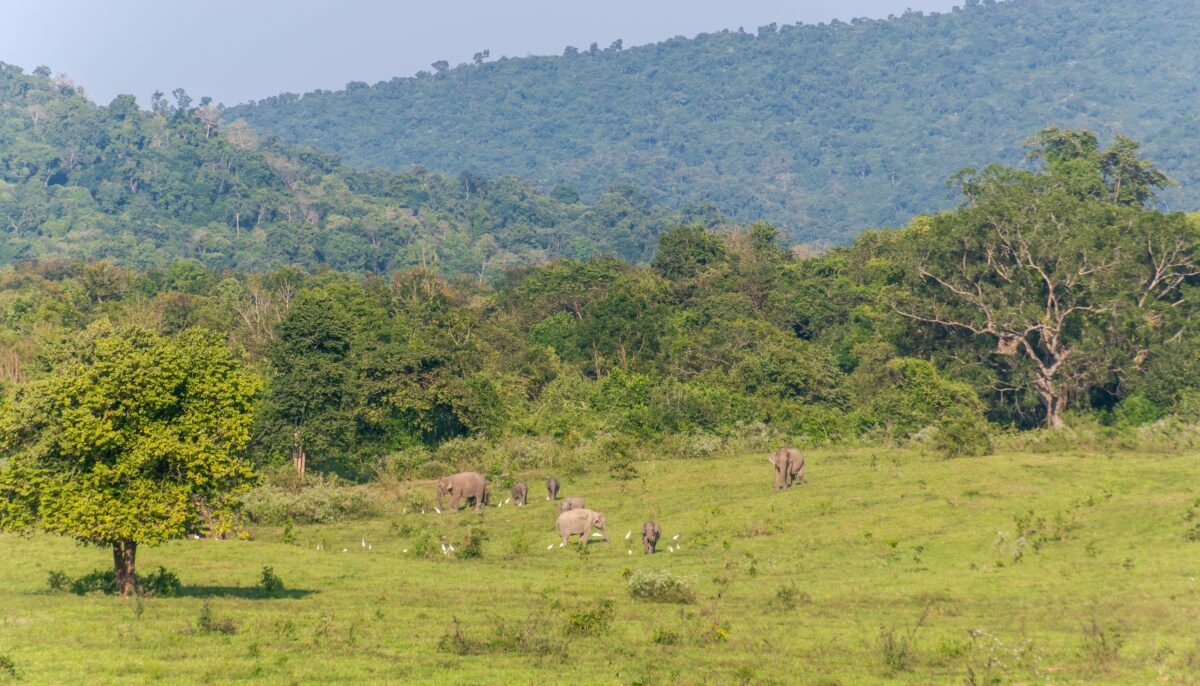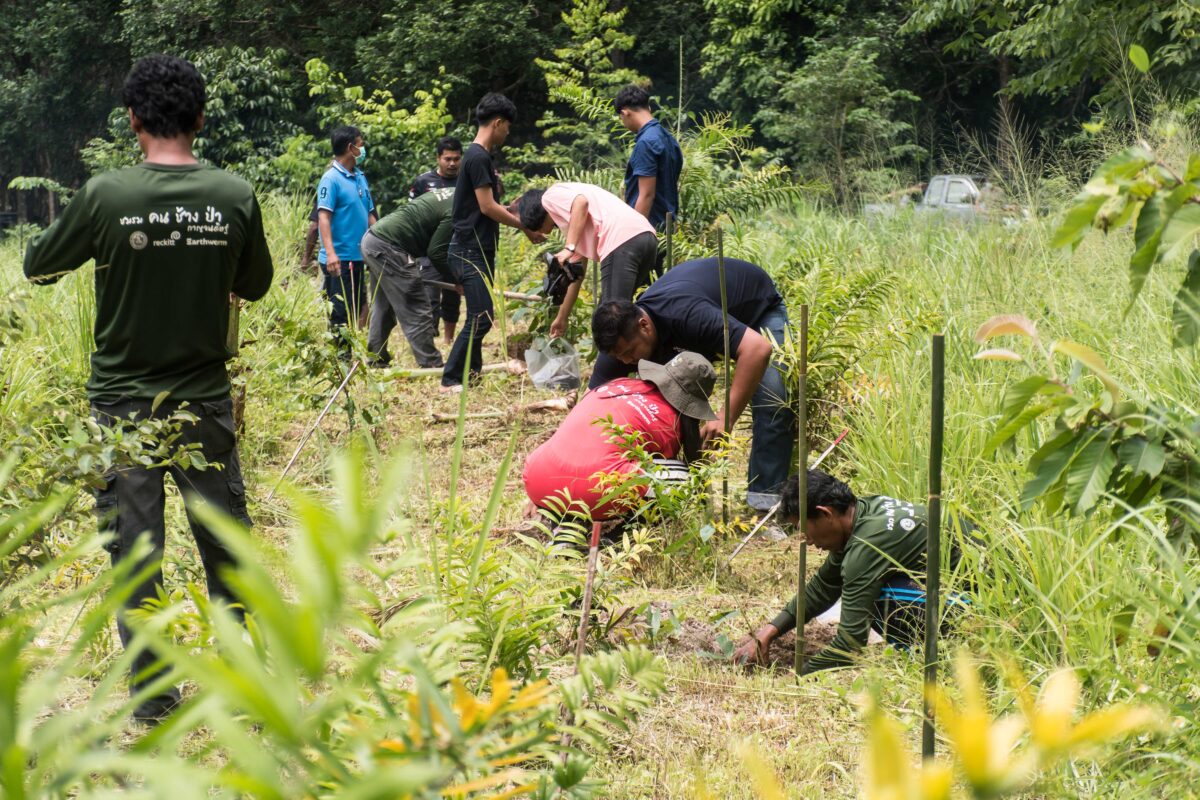9-minute read
Surat Thani, a province in southern Thailand, is a hub of sustainable rubber production, with a lush landscape and a unique challenge – finding a way for humans and elephants to live together.
Elephants, which have lived in this region for centuries now roam through human-dominated landscapes, leading to a complex problem known as Human-Elephant Conflict (HEC).
Tragically, the most recent incident in a series of elephant deaths occurred when two wild elephants were electrocuted along a road in Tai Rom Yen National Park - a consequence of escalating agricultural activities, including the 'durian boom', in which the tropical fruit, highly valued for its unique flavour, plays a central role.
The combination of low natural rubber prices and the surging demand for durians, especially in China, is compelling smallholder rubber farmers in Surat Thani to transform their plantations. This transformation involves the installation of electric fencing, a measure not previously used in agriculture which marks a significant change in the dynamics of the landscape.
Operating in Surat Thani for almost 8 years, Earthworm Foundation works with various stakeholders to find creative solutions to promote harmony between humans and elephants in the region, including Reckitt, a global health, hygiene, and nutrition company. Natural rubber is a key raw material in Reckitt's Durex condom brand.
With the support of Reckitt, Earthworm's rurality programme has had a positive impact on more than 1,000 small-scale rubber farmers. The initiative aims to improve the sustainability of their livelihoods by promoting improved agricultural practices, encouraging diversification of income sources and working with entities such as the Rubber Authority of Thailand among others. The overall programme includes a range of activities and interventions, such as the implementation of regenerative agriculture, the creation of alternative livelihoods and active participation in ecosystem restoration efforts.
Interactions between humans and elephants involve competition for space and resources. With the expansion of human populations, the reduction in elephant habitats is forcing these colossal animals to take refuge in agricultural areas in search of subsistence. At the same time, the transformation of forest areas to accommodate human development is exacerbating the reduction in elephant habitat.
This dual impact means that elephants must either come to terms with the reduction in their habitats, or persist with their traditional migration routes despite changes in land use. As a consequence, these dual dynamics contribute to an escalation of human-elephant interactions in elephant ranges, often resulting in crop damage, financial loss and, sadly, death.
When people strive to protect their livelihoods, they can end up injuring or even killing elephants. Facing a survival threat, the Asian Elephant is classified on the IUCN Red List as "Endangered". In Thailand, the Wildlife Protection Act (2019) serves as the principal legislation for wildlife conservation, encompassing elephants.

Human-Elephant coexistence in Surat Thani is an important issue for local communities. Farmers suffer most from crop damage, which can ruin their livelihoods and plunge them into poverty. The constant fear of elephants coming too close to their homes and endangering their families is a source of stress and anxiety for local people.
In addition, the loss of natural resources and the fragility of elephant habitats threaten the long-term survival of these amazing creatures. According to Mr. Kriangsak Sribuarod, Head of Klongsang Wildlife Research Station of Surat Thani, the situation calls for in-depth discussion and understanding between the various partners, including the government, the private sector, and villagers regarding the transformation of land use affecting elephant habitat.
"In the past, this land was covered in rubber plantations, but when rubber prices dropped, people switched to growing fruits and palm trees. Elephants noticed these new palms and bananas and assumed it was an open territory, so they moved in, either settling there or consuming agricultural crops for food. This shift in farming has led to an even higher share of water drawn from the forest, causing seasonal water scarcity for elephants. So, when elephants search for water and food, they settle outside the forest boundaries instead of returning," Sribuarod said.
- Human-Elephant-Forest Club: Volunteers, often smallholder farmers, carry out routine night patrols to reduce human-elephant interactions and damage, including establishing food sources for wild elephants, tracking their movements and educating communities to promote co-existence.
- Early warning systems: Advanced technologies, such as real time camera traps which linked into mobile application, allow elephant movements to be predicted and monitored. Early warning systems inform communities of elephants' approach, giving them time to take preventive measures and avoid interactions.
- Community Education: Raising awareness of elephant behaviour and conservation is essential. Educational initiatives in schools and communities cultivate understanding and empathy for elephants, fostering increased support for conservation endeavours.
- Protected Corridors: Dedicated efforts are actively underway to establish protected corridors for elephants, connecting fragmented habitats and allowing free movement.

Following elephant deaths, a club of volunteer patrollers charged with protecting their local community faced a devastating incident when they were confronted with an incursion that resulted in a fatality. This heart-breaking event highlights the urgent need to tackle the human-elephant confrontation and explore safer ways for the two species to co-exist in their shared habitat. Recognising the need for an equitable approach, a number of organisations, government agencies and local communities have joined forces to develop creative strategies to encourage peaceful coexistence between humans and elephants in Surat Thani.
Achieving coexistence between humans and elephants in Surat Thani requires a multifaceted approach, combining conservation efforts, community engagement, and technical solutions. Earthworm Foundation is committed to supporting initiatives that take into account the needs of both elephants and human communities.
Mr. Pakinai Noppakun, vice-president of the Man-Elephant-Forest Club in Kanchanadit district, stresses the need for coexistence.
"I'd like to appeal to the villagers to be open-minded. If we can avoid conflicts, we can all live peacefully. The same goes for the elephants—they won't come down here if they have sufficient food in their territory. So, if your farm hasn't suffered much damage, please don't harm them," Noppakun said.
The Surat Thani problem is a smaller version of a bigger challenge: how can we coexist peacefully with nature?
Earthworm Foundation is advancing substantially by exploring inventive solutions and gaining a comprehensive understanding of elephants and communities. This endeavour aims to formulate a landscape-level work plan in the coming months, employing a multi-stakeholder approach for sustained impact and enhancing the cohabitation process between humans and elephants. These initiatives will create a precedent for regions facing similar challenges, paving the way for a more balanced and sustainable future for all.


